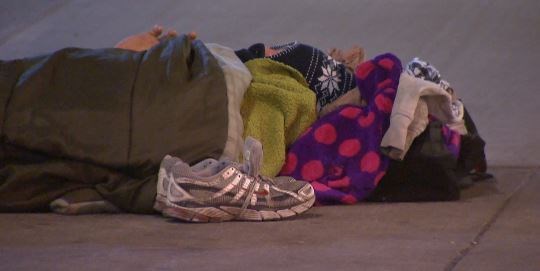THUNDER BAY – A point-in-time count of those experiencing homelessness in Thunder Bay offers valuable insight, despite lower-than-usual participation, organizers say.
The results of the 2021 count, led by the Thunder Bay District Social Services Administration Board (TBDSSAB) and Lakehead Social Planning Council (LSPC), were officially released this week.
The count returned 221 valid surveys across the Thunder Bay District, compared to 474 in 2018, and 289 in 2016.
That doesn’t reflect a drop in the local homeless population, the DSSAB emphasized, saying the lower number was partly influenced by the pandemic. CAO Bill Bradica said the survey also came at a moment of increased stigma against the homeless in Thunder Bay.
A new by-name list started by the DSSAB last year, which has so far registered 693 people, provides “a much more accurate indicator of the number of people experiencing homelessness” in the district.
The point-in-time count was administered on Oct. 2 by about 100 volunteers at 11 locations across the district over 24 hours.
The Canadian Lakehead Exhibition (CLE) was the only public drop-in site due to COVID-19, while clients at shelters, transitional housing locations, and elsewhere were invited to participate, and received a small honourarium.
Bradica said people were more hesitant than usual to respond. He attributed that to negative public attention to homelessness, particularly a high-profile conflict over the use of an abandoned gas bar for shelter at a local mall.
“One factor that contributed, we think, is the increased negative emphasis on people who are homeless or under-housed, especially around the time the survey happened,” he said. “[We were] hearing from some of the partner organizations that helped with the survey indicating they felt that did keep some people from filling it out.”
The situation spilled into violence just days later, he noted, when a man was charged after driving through a tent at the site.
The count was also delayed twice by the pandemic, then conducted in October rather than April to meet a deadline set by the province, which mandates point-in-time counts under the Community Homelessness Prevention Initiative (CHPI).
The count may not reliably track how many people are experiencing homelessness, but it does offer insight into their lived realities, Bradica said.
“We were a little concerned with the numbers being lower, would there be value?" he said. "But because it’s showing that consistency of the reasons for homelessness, and that it’s primarily Indigenous people who are over-represented, it still [provides] a representative sample of the situation that’s out there.”
Fully 68.3 per cent of those surveyed were Indigenous, similar to the figure of 66 per cent in the 2018 count.
Most – 63 per cent – were male.
Forty-five per cent had spent time in foster care, and more than half first experienced homelessness before turning 25.
Fifty-three per cent of respondents reported having a mental health condition.
Asked about what contributed to their homelessness, 20 per cent listed low income, 19 per cent substance use, 12 per cent unfit or unsafe housing, 11 per cent conflict with a partner, and 9 per cent a landlord-tenant conflict.
Forty-three per cent of respondents were planning to stay in an emergency shelter that night, while 17 per cent planned to couch surf, 12 per cent in transitional housing or a motel, and another 12 per cent were unsheltered, including staying in a tent or vehicle.
Fifty-eight per cent said they were chronically homeless, while others faced shorter episodes of homelessness, often repeatedly.
Bradica is hopeful there could be new investments for homelessness in the 2022 provincial budget, which will be presented by March 31.
The government is reviewing two funding programs the DSSAB administers, the Community Homelessness Prevention Initiative (CHPI) and Home for Good programs.
It could also top up the Social Services Relief Fund, he indicated, which the province says has provided over $1 billion in support for housing, homelessness, and anti-poverty initiatives since 2020.
Those decisions have clear consequences, Bradica said, with SSRF funding used to hire additional outreach workers who helped connect some people with funding.
“The Social Services Relief Fund money that’s been available during the pandemic has allowed not only us, but organizations we’ve given this funding to, to reach more people… and actually help them into shelter, put them in motel spaces,” he said. “In some cases we’ve been able to actually put them in permanent housing situations, because of that additional capacity that’s there.”
Since 2018, the DSSAB reports 298 homeless individuals have been housed through initiatives including the High Needs Homeless Community Housing waitlist and Home for Good program.
